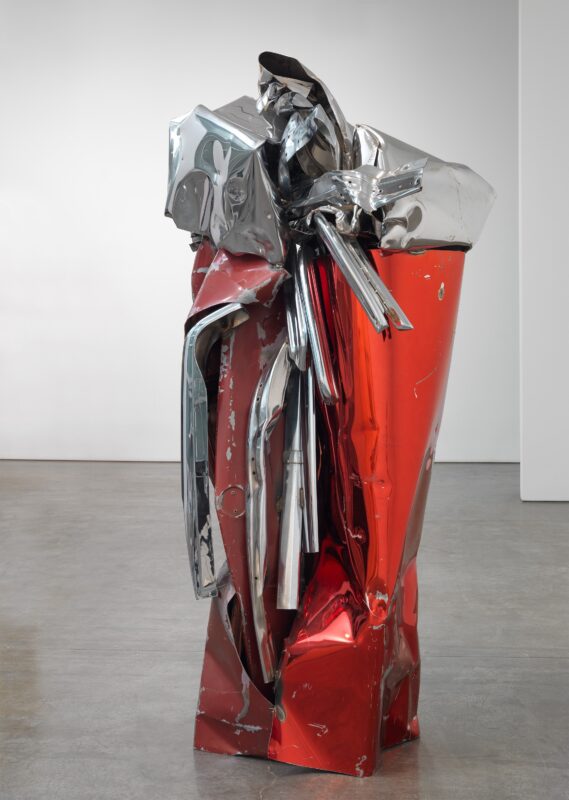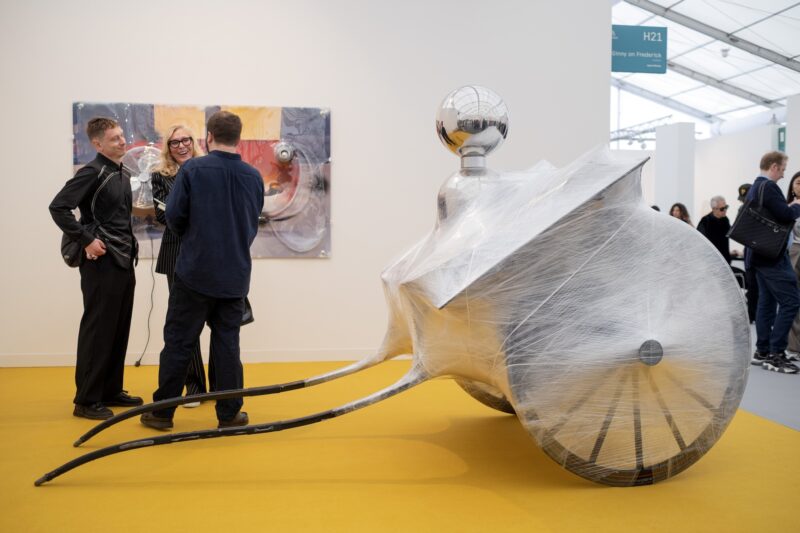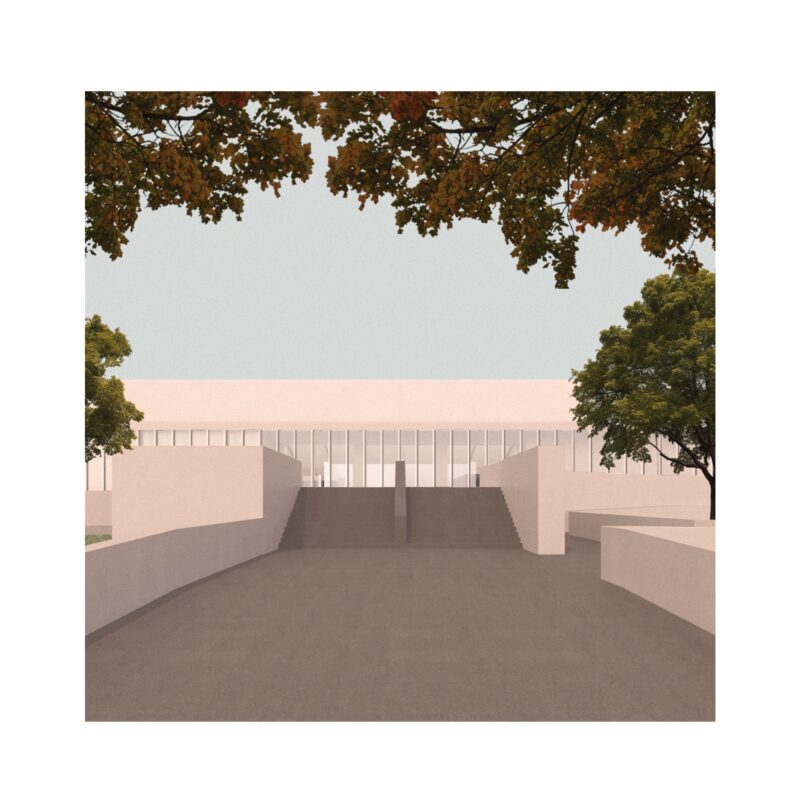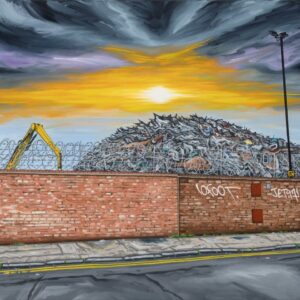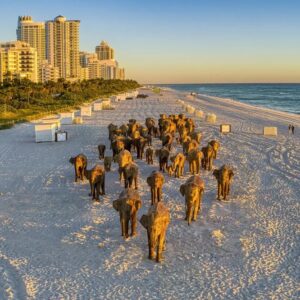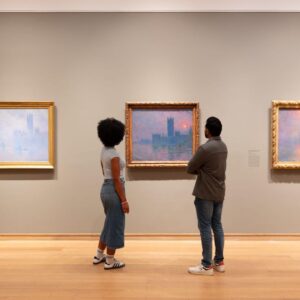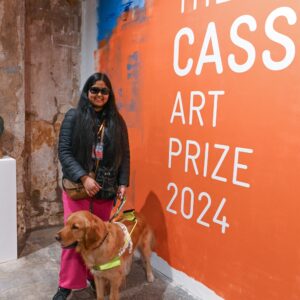No sooner had I walked into Frieze Masters than I bumped into the Brazilian painter Gabriella Max. Perhaps that was a portent, as I found plenty of interesting work from South America…
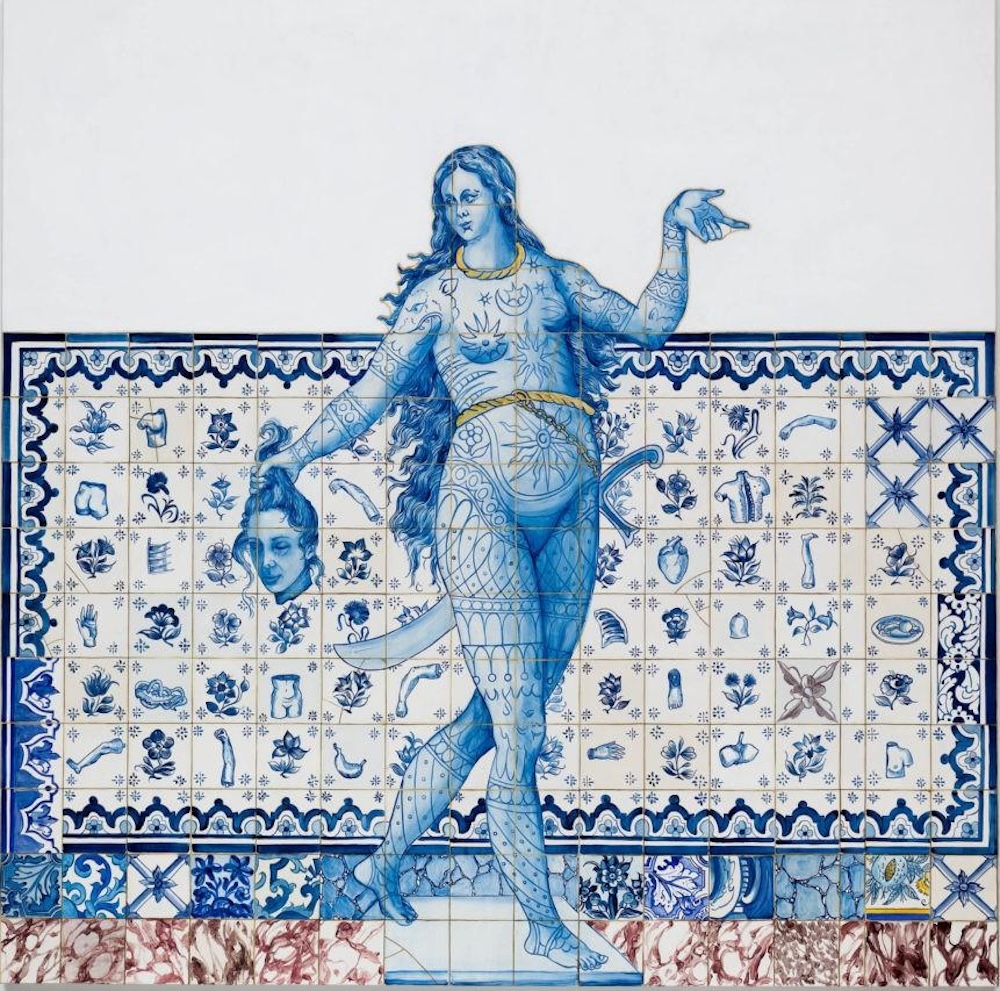
Adriana Varejão: Entrance Figure III, 2005 at Victoria Miro – London / Venice
It seems logical to start with an entrance… Welcome figures – usually courtly men – separated the public and private areas of Portuguese palaces in the 17th-18th centuries. Rio-based Adriana Varejão, says the gallery, replaces the figure with the female body of America, connoted as ‘wild’ and ’foreign’, presenting a decapitated head which is a self-portrait of the artist herself… the subversive invitation to engage with a foreign space is emphasised.’
Instead of needles facilitating the sewing of thread, they themselves take on the role of the thread here, being delicately sewn in to a silk shirt so that its softness is taken over by sharpness. Salcedo made this after seeing how a Chicago mother had left the last shirt her son ever took off hanging in place after he was gunned down on the street. Both Salcedo and Varejão were among the ten artists in the excellent ‘Studio’ section, which gave a flavour of artists’ working processes and linked old work – Masters focuses on pre-21st century – to newer production.

Doris Salcedo: Disremembered XI, 2021, at White Cube – multiple locations
Instead of needles facilitating the sewing of thread, they themselves take on the role of the thread here, being delicately sewn in to a silk shirt so that its softness is taken over by sharpness. Salcedo made this after seeing how a Chicago mother had left the last shirt her son ever took off hanging in place after he was gunned down on the street. Both Salcedo and Varejão were among the ten artists in the excellent ‘Studio’ section, which gave a flavour of artists’ working processes and linked old work – Masters focuses on pre-21st century – to newer production.

Víctor Magariños D.: Untitled, 1990, at MC Galeria, Buenos Aires
The ‘Spotlight’ section – 27 solo shows for historically overlooked 20th century figures – is always interesting. Abstract Argentine artist Víctor Magariños D. (1924 – 1993) developed a language of signs inspired by science, seeing them, says the gallery, as ‘related to the happiness that man was achieve through a greater knowledge of the natural order’.
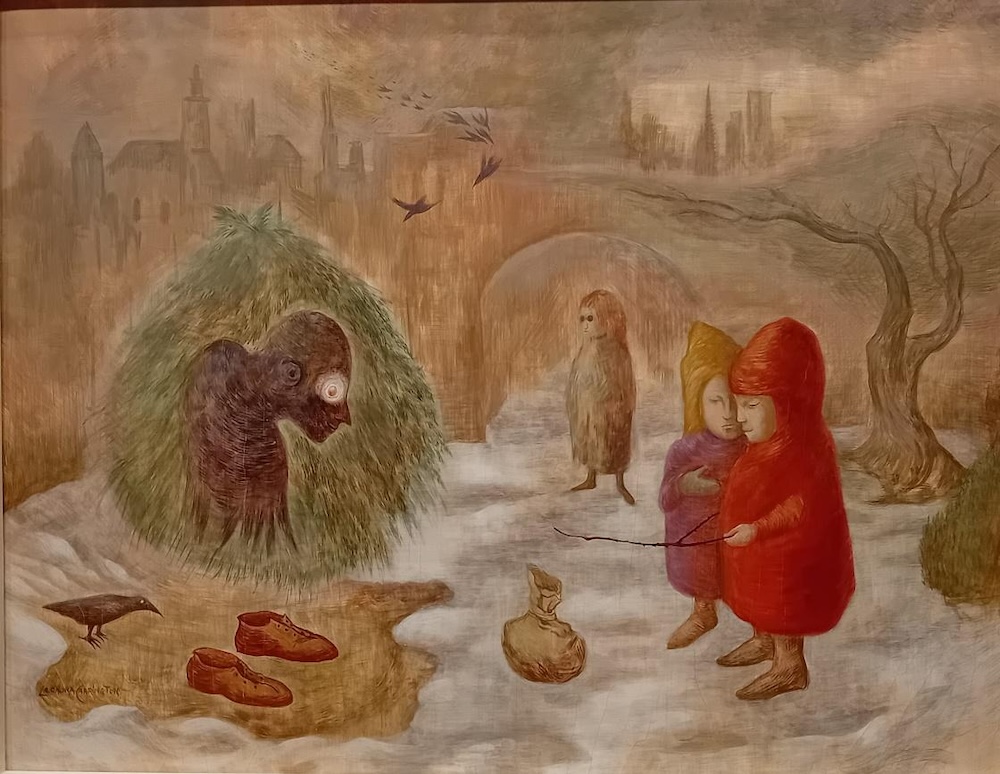
Leonora Carrington: Eye Witness, 1967, at Gallery Wendy Norris – San Francisco
A mysterious egg tempera from the increasingly highly regarded surrealist (1917-2011), who was born in Lancashire, but lived in Mexico from 1942 onwards. You might wonder who is doing the witnessing, given that one figure looks likely blind; two are caught up in their own concerns, possibly divination; the other is a strange spirit with shoes but no legs and rather implausible-looking eyes. Maybe it’s the bird… The gallery suggests that ‘Carrington’s witnesses cannot be relied upon to see what is in front of them. Instead they look to forms of vision beyond our worldly understanding. In Eye Witness, it is not the eyes that witness anything at all.’
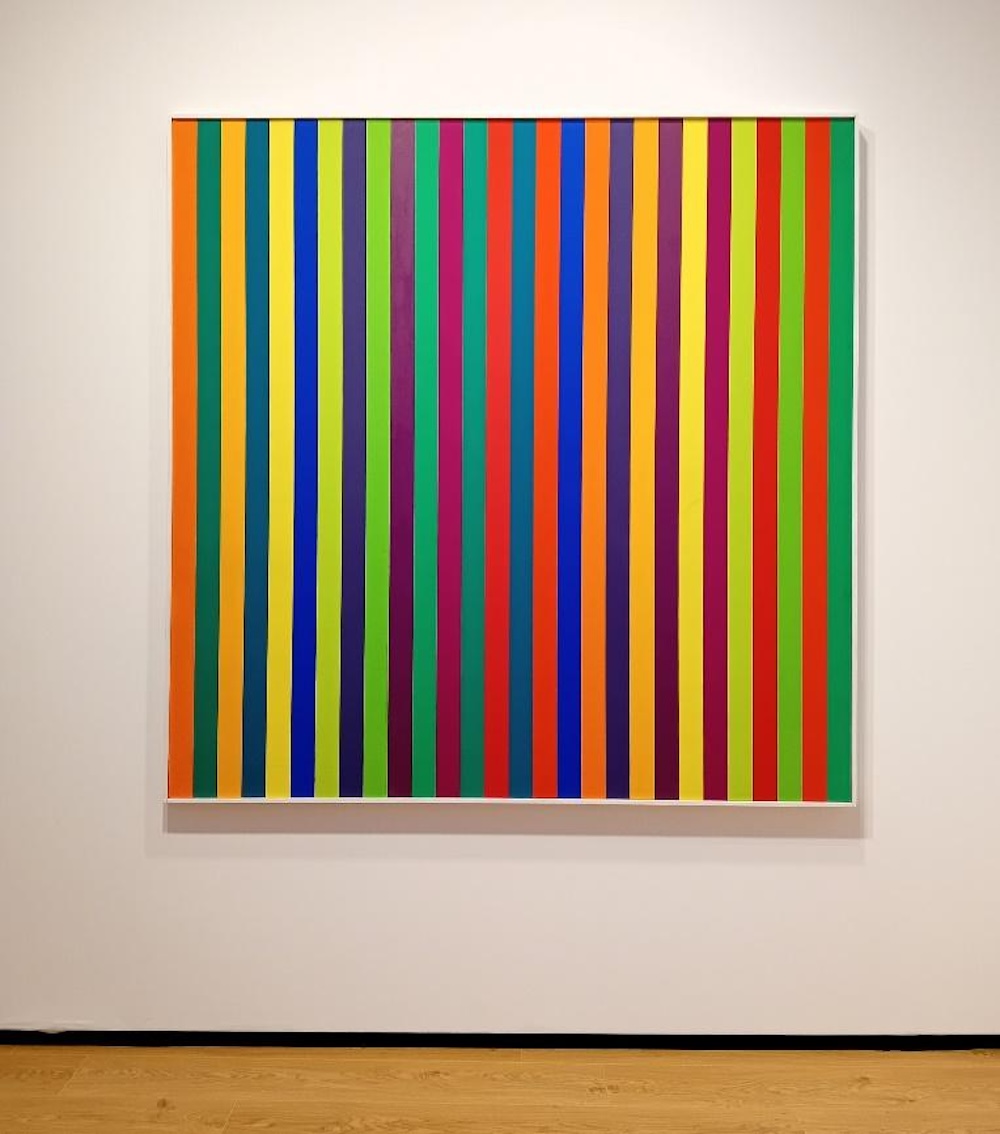
Julio Le Parc: Serie 13 no 13-5, 1970, at Galleria Continua – multiple locations
An extensive survey of the 96 year old’s multifarious takes on geometric abstraction included this blazing stripe painting. Le Parc was born in Argentina, though he made his name as pioneer of Kinetic and Op Art in France, where he has lived since 1958. The colours used here are from his own range of 14, used exclusively and pure throughout his mature practise.

José Antonio da Silva: The Burning, 1971, at Cecelia Brunson, London
A natural Amazonian landscape is unlikely to include any sky: good for the planet, a bit restrictive for pictorial composition. Yet José Antonio da Silva (1909-96), a self-taught farmer who turned to art fulltime aged 37, includes the sky in this attractively geometric agricultural landscape. That’s because the trees have been burned down to make way for farming, hence the scatter of charred branches: bad for the planet, better for the pictorial space.

Feliza Bursztyn: Tree, 1972 at The Mayor Gallery – London
The Colombian Feliza Bursztyn (1933-82) lived an unconventional life, and saw her very varied sculptures as ‘disobedient agents’ resisting her country’s traditionalist patriarchy. Consistent with that, she often chose to be photographed while welding. This playful piece welds typewriter parts onto a marble base to suggest writing branching out in all directions.
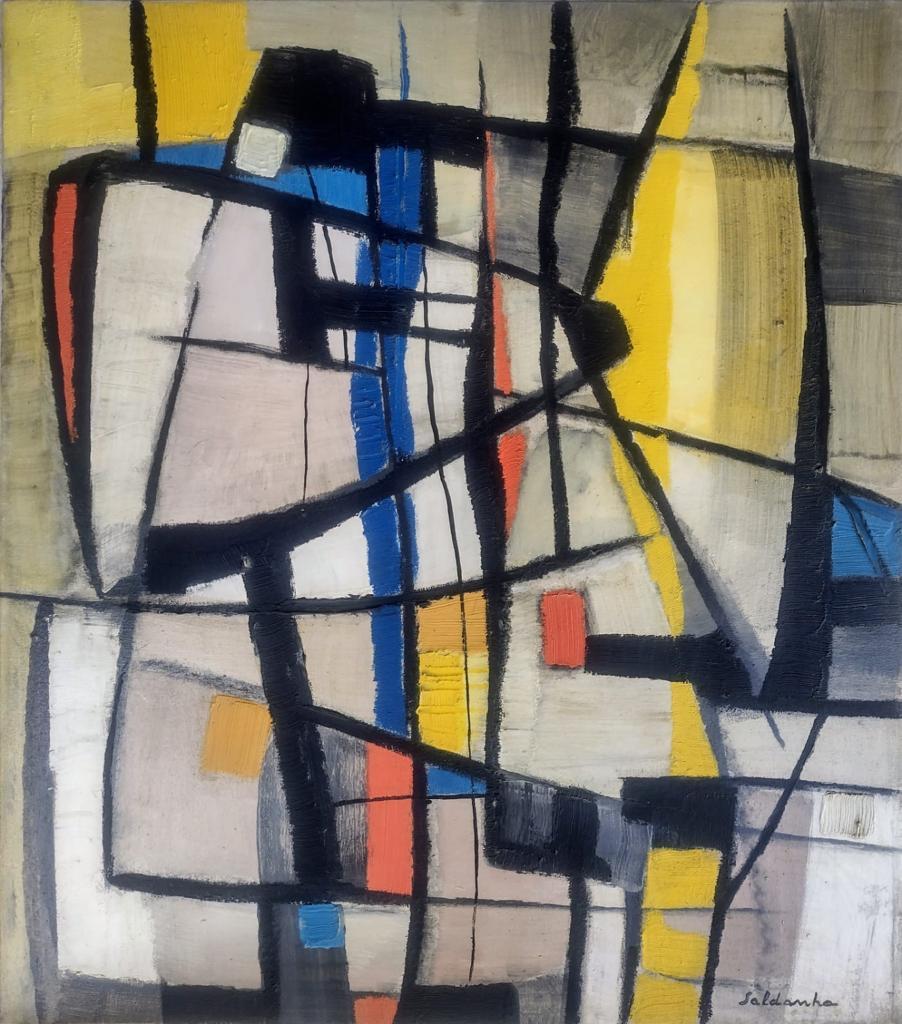
Firmino Saldanha: Abstract, 1950’s, at Galeria MaPa, São Paulo
This attractively-constructed abstraction seems naturally related to the background of the artist. Firmino Saldanha (1906-85) was an architect who developed a parallel painting practice in the 1940’s, regarding Georges Braque as his principal inspiration. He made murals as well as the domestically scaled paintings show at Frieze masters, whilst also serving ten years as president of the Institute of Architects of Brazil.
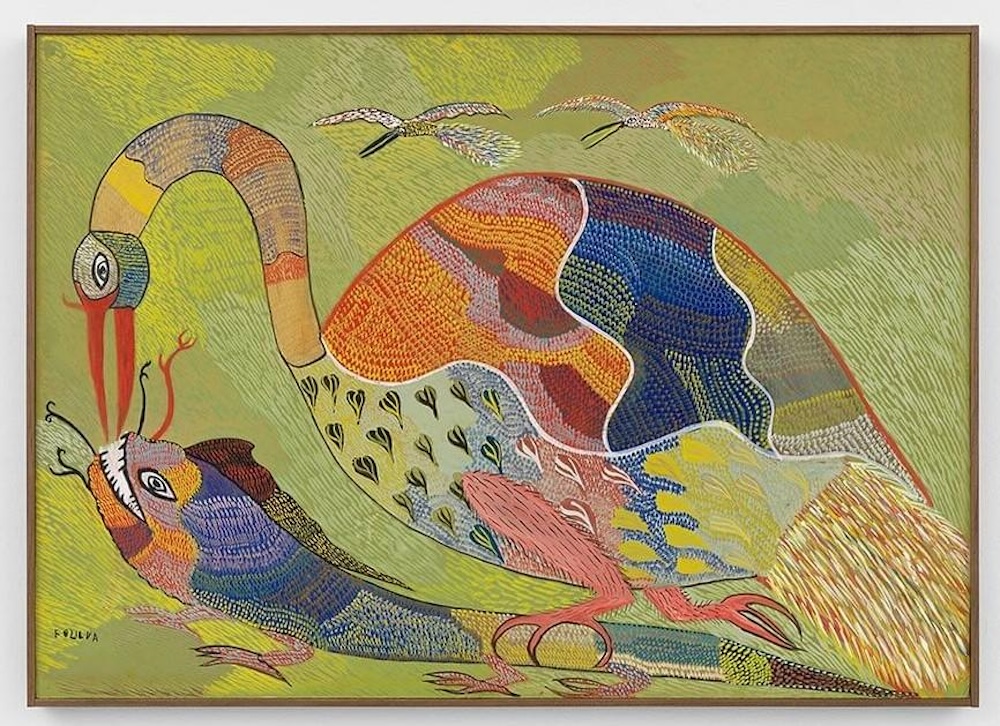
Chico da Silva: Untitled, 1960’s at Galatea, Sao Paulo
Chico de Silva (1910-85) was born in the Amazon forest, settling in Fortaleza in 1935. Playing off stories and mythologies from the oral tradition of Northern Brazil, he mainly represented animals. Some are fanciful versions of actual creatures, many merging different creatures or making them up – often set against equally fantastical vegetation.
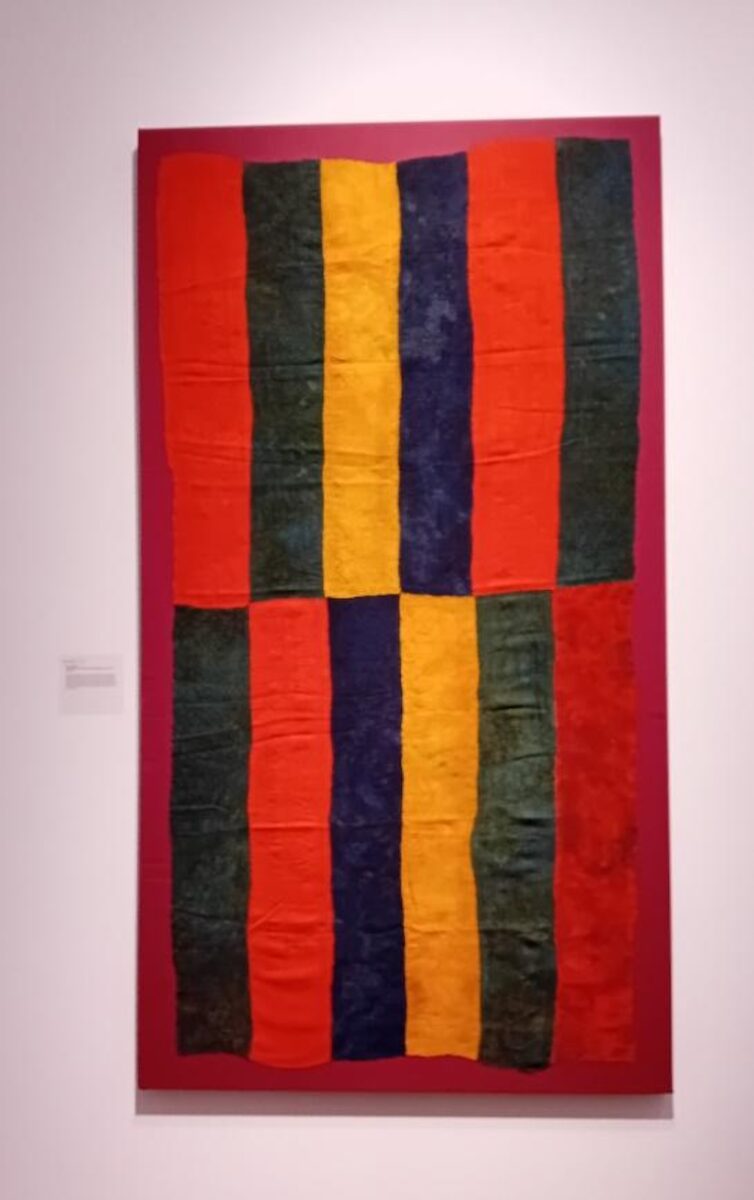
Nazca Tunic, c. 200-500 AD at Paul Hughes Fine Art – London
Frieze Masters covers every pre-contemporary period, but pre-20th century South American pickings were more limited. It is not a surprise to learn that Josef and Anni Albers had a similar tunic in their collection, nor that Sean Scully is an avid admirer of the weaving from what is now southern Peru.
